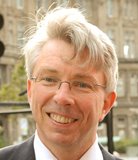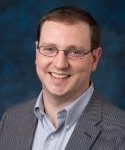Karl Rahner Consultation
The Rahner Consultation of the Catholic Theological Society of America heard two papers on June 11 at the Caribe Hilton in San Juan.
The first presenter was Paul D. Murray of Durham University who spoke on “Charism, Institution and Trinity in Rahner.” Murray began by delineating his two background concerns: 1) establishing a proper ecclesiological basis for the ministry of the Church, and 2) extending this basis into an integrated theology of the ministry that sheds new light on the relationship between the free charism of the Holy Spirit and the Church’s effort to order this charism institutionally. Murray noted that there was a pneumatological deficiency in the West going back to St. Augustine, who subordinated the Holy Spirit to Christ. Rahner wanted to overcome this deficiency, said Murray, by giving the Holy Spirit a greater role both within the Trinity (ad intra)and in the economy of salvation (ad extra). Rahner’s new trinitarian framework implied that the church has two elements with their own particular responsibilities: its hierarchical organization and its charismatic structure. In The Dynamic Element of the Church, said Murray, Rahner correctly saw that the hierarchy exists to serve the charisms within the Church.
But this emphasis on hierarchy can also threaten the Church. The “Christic” magisterium (i.e., the teaching office composed of representatives of Christ), separated from the Spirit, can devolve into a mere mechanism for maintaining a bureaucratic routine. When that happens, said Murray, a “standoff” can arise between the charismatic element in the Church and the hierarchical. Murray’s solution would be to elevate the role of the Spirit from an agent of acceptance to a fully-realized partner with Father and Son. The Spirit should be seen, according to Murray, as the “initiating, transforming, life-giving power of God.” The fuller understanding of the Spirit proposed by Murray would exercise a more active role in the Trinity. The Spirit would be seen as the action of God, the force that inspires people to search out the possibilities that God offers. Far from being merely the love that links Father and Son (as in St. Augustine), the Spirit should be understood as part of a dynamic threesome – an unoriginated Father, an expressive Word, and an actualizing Spirit. Such a shift, concluded Murray, would secure the pneumatological basis for church office and the charismatic element in the Church. The twelve attendees asked a number of questions about Murray’s paper, and could easily have discussed it at greater length.
The second paper was by Matthew D. Petrusek (Loyola Marymount University) and entitled “Specifying ‘The Space’ Necessary to Exercise the Fundamental Option: How Human Capabilities Help Clarify Rahner’s Conception of Justice.” The “space” is a reference to Rahner’s essay on “The Dignity and Freedom of Man.” In the essay, Rahner stated that the human personality “requires of necessity a certain space for realizing itself.” Petrusek depicted this space as the condition for the possibility of human self-realization. He suggested that the work of political theorist Martha Nussbaum can make more specific the conditions at which Rahner only hinted. Petrusek’s overall aim was to expound the notion of justice implicit in Rahner. He argued that the moral sense in Rahner is “grounded in the vulnerability of the individual’s capacity to effect her fundamental option.” In other words, Petrusek linked the conditions for human self-realization with the capacity to make what Rahner called the fundamental option, that is, the basic decision about the shape of one’s life.
This option, for Petrusek, means a capacity (I am able to choose) and a decision (I choose to live thus). To Rahner, the concept of justice implies that, in my actions toward my neighbor, I define my relation to God. Rahner should have been more specific, Petrusek implied, about what would enable the moral actor to make a sound choice. Martha Nussbaum remedies that lack of specificity by arguing the existence of necessary capacities for moral decision-making. She means things such as the capacity for living healthily, for affiliating socially, and for enjoying bodily integrity. Nussbaum, claimed Petrusek, fills a genuine void in Rahner, for whom the concept of free choice was not fully conceptualized. By contrast, Nussbaum gives specific examples of what makes free moral action possible. But Nussbaum falls short, Petrusek argued, due to a fundamental weakness in her moral theory. It lacks, he said, a basic metaphysics or justification for moral goodness rooted in something other than an empirical consensus. If there is such a thing as genuine goodness, then there must be such a metaphysical justification. Rahner supplied it. Nussbaum did not. The members thanked Petrusek for making his paper available on the KRS website and asked about Nussbaum’s assumptions that would more readily identify her place within philosophy and her relationship to a theologian such as Rahner.
The 2016 Rahner Consultation was moderated by Michael M. Canaris (Loyola University Chicago) The KRS Administrative Team includes Michael M. Canaris, Nancy Dallavalle (Fairfield University), Mark F. Fischer (St. John’s Seminary, Camarillo), Peter J. Fritz (College of the Holy Cross), Richard Lennan (Boston College), and Richard Penaskovic (Auburn University).

